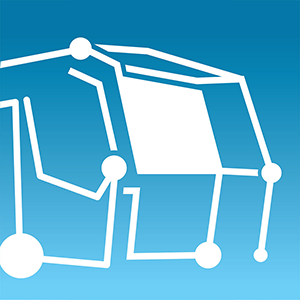
Conveyor belts transport the cleaned ballast from the screening unit back to the track. Hydraulically adjustable baffle plates distribute measured quantities of ballast via slewing distribution conveyor belts or ballast chutes.
This allows distributing the ballast as follows:
A plough scraper is positioned behind the ballast distributing unit. It sweeps off the ballast left on the sleepers and rails during ballast cleaning. At the same time, it regulates the ballast crown.
The slewing range of the distributing conveyor belt allows ballasting the diverging rail.
Optional ballast regulating equipment and a packing device make it possible to further increase the track geometry quality behind the cleaning machine. The high track quality allows reopening the track for traffic speeds of up to 70 km/h, depending on the regulations of the railway administration.
Material conveyor and hopper units positioned behind the machine supply new ballast. They can not only add cleaned ballast, but also perform a complete renewal of the ballast bed. Hopper cars are no longer needed for reballasting. This simplifies work site logistics.
New ballast is of great importance, particularly at the start of the work site. The entry hole for the excavating chain in the track must be re-filled with ballast. At the start of the work process, however, the work circuit is not yet wholly filled with ballast. The supply of new ballast fills this gap.
During cleaning, the conveyor system takes up the new ballast and places it in the track together with the cleaned ballast. The amount of new ballast can be metered accurately according to the specific situation. The track is filled immediately with the amount of ballast needed for the first tamping pass.
The homogenisation of the ballast structure – even before the first tamping pass – is increasingly gaining importance in maintenance schedules (for ballast bed cleaning). This provides yet another opportunity for increasing the initial quality and for a responsible allocation of the budget. For this reason, large ballast cleaning machines are increasingly equipped with stabilising units for consolidation and homogenisation of the cleaned or newly placed ballast.
The cleaned ballast and the new ballast are placed layer by layer. An (optionally) integrated dynamic track stabilizer homogenises every single layer.
This increases the track grid’s resistance to lateral displacement. Combined with a targeted initial settlement of the track, the intervals between maintenance are extended.
Optionally, a second layer of new ballast can be installed in the tamping area via chutes at the rear power unit, for instance, on the RM 900.
Cleaned ballast and new ballast are installed in layers. This provides the ideal foundation for a high initial quality of the track.